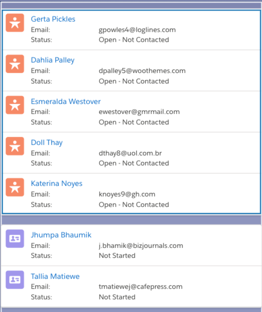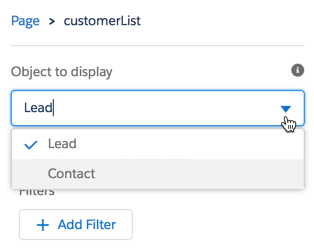Easy Spaces is a fictional event management company that creates and manages custom pop-up spaces for companies and individuals. Easy Spaces helps customers create temporary spaces like cafés, game rooms or themed rooms for special occasions in their offices and homes.
- Features
- Installation
- Code Highlights
A quick overview of the features you can explore with Easy Spaces:
- Modular app design and Unlocked Packaging
- Lightning Console & Workspace API
- Lightning Flow
- Dynamic flow interview components
- Custom flow screen components
- Local Action components
- Custom Lightning Page Templates
- Lightning Themes and Design Token Bundles
- Custom Metadata Types
-
Authenticate with your hub org (if not already done):
sfdx force:auth:web:login -d -a myhuborg
-
Clone this repository:
git clone https://github.com/trailheadapps/easy-spaces cd easy-spaces -
Create a scratch org and provide it with an alias (easyspaces in the command below):
sfdx force:org:create -s -f config/project-scratch-def.json -a easyspaces
-
Install the ESBaseObjects package in your scratch org:
sfdx force:package:install --package 04tB00000006FFSIA2
-
Install the ESBaseCode package in your scratch org:
sfdx force:package:install --package 04tB00000006FFXIA2
-
Install the ESBaseStyles package in your scratch org:
sfdx force:package:install --package 04tB00000006FFcIAM
-
Install the SpaceManagementApp package in your scratch org:
sfdx force:package:install --package 04tB00000006FFhIAM
-
Assign two EasySpaces permission sets to the default user:
sfdx force:user:permset:assign -n EasySpacesObjects sfdx force:user:permset:assign -n SpaceManagementApp
-
Load sample data:
sfdx force:data:tree:import --plan ./data/Plan1.json sfdx force:data:tree:import --plan ./data/Plan2.json -
Open the scratch org:
sfdx force:org:open -
Follow the steps below to configure the app theme.
Use this option if you don't have Salesforce DX configured and want to experience the sample app.
-
Sign up for a Developer Edition (DE) org.
-
Enable MyDomain in your DE org. Instructions to do this are here.
-
Click this link to install the ESBaseObjects package and choose Install for All Users.
-
Click this link to install the ESBaseCode package and choose Install for All Users.
-
Click this link to install the ESBaseStyles package and choose Install for All Users.
-
Click this link to install the SpaceManagementApp package and choose Install for All Users.
-
From the command line, clone this repository:
git clone https://github.com/trailheadapps/easy-spaces cd easy-spaces -
Import Lead data:
- In Setup, type Data Import in the Quick Find box and click Data Import Wizard.
- Click Launch Wizard.
- Click the Standard objects tab, click Leads, and click Add New Records.
- Drag Lead_Data.csv from the data folder of this project to the upload area.
- Click Next, Next, and Start Import.
-
Import Contact data:
- In Setup, type Data Import in the Quick Find box and click Data Import Wizard.
- Click Launch Wizard.
- Click the Standard objects tab, click Accounts and Contacts, and click Add New Records.
- Drag Contact_Data.csv from the data folder of this project to the upload area.
- Click Next, Next, and Start Import.
-
Import Market data:
- In Setup, type Data Import in the Quick Find box and click Data Import Wizard.
- Click Launch Wizard.
- Click the Custom objects tab, click Market, and click Add New Records.
- Drag Market_Data.csv from the data folder of this project to the upload area.
- Click Next, Next, and Start Import.
-
Import Spaces data:
- Open the Space_Data.csv from the data folder of this project.
- In the Market__c column, add the record Id for the correct Market imported in the previous step. Use the Market City Name column to help match spaces to the correct Market.
- Save the changes to your file. Note: You must choose UTF-8 encoding when you save the file.
- In Setup, type Data Import in the Quick Find box and click Data Import Wizard.
- Click Launch Wizard.
- Click the Custom objects tab, click Space, and click Add New Records.
- Drag Space_Data.csv from the data folder of this project to the upload area.
- Click Next, Next, and Start Import.
- If you see any issues with restricted picklist values blocking import, double-check that you saved your .csv with UTF-8 encoding and try again.
-
Follow the instructions in the Completing the Installation section below to enable the Easy Spaces custom theme.
-
In App Launcher, select the Space Management app.
-
Note: Before trying to work with the Spaces Designer, use the Reservation Manager to create some draft reservations.
-
Have fun exploring!
- In Setup, navigate to Themes and Branding
- Select New Theme
- Use the following values to configure your theme:
- Theme Name: Easy Spaces
- Brand Color: #B2FDDA
- Brand Image: Upload the 'easy_spaces_tile_small.png' file from the 'es-images' folder in your cloned repo
- Page Background & Global Header Background: #8E94C0
- Optional Upload the remaining images in the 'es-images' folder as the Default Group & Default User Profile Banner Images
- Save & activate your theme
The spaceDesigner and reservationHelper components render flow interviews dynamically, by using the lightning:flow base component. You can see the customerDetails and smartGallery components at work as screens in these dynamic flows. Both of these components use the functionality of the lightning:availableForFlowScreens interface to control flow navigation actions.
See this blog post for more detail about custom flow navigation and dynamic flow interviews.
Components used as Lightning Flow screens also enforce a convention in the markup of their design files, to help developers better track how attributes are being used by flow interviews. See the customerDetails and smartGallery component design files for examples.
The customerList and customerTile components can display information from Contact objects or Lead objects.
The customerList component uses a design attribute to allow for users working in Lightning App Builder to control which object an instance of the component should display:
This is just one example of object-agnostic design at work in Easy Spaces. See this blog post for more detail about this pattern.
Easy Spaces uses the Workspace API to provide customized navigation behavior and control the tabs and subtabs in the Space Management console app. You can see the Workspace API at work in the openRecordAction, reservationHelper and spaceDesigner components. You can get more detail about using this API in your components in this blog post.
Easy Spaces illustrates how to organize application metadata into granular units or modules. This approach is reflected in the design patterns at work throughout the application, like the use of design tokens and object-agnostic components. But you'll also see this at work in the structure of the Easy Spaces repo itself.
To install the Easy Spaces application, you'll need to install several, interdependent unlocked packages. The dependecies between the Easy Spaces packages are listed in the sfdx-project.json file for this repo.
You can also explore the contents of each package by looking at the related package folder within this repo. The path attribute entries in the sfdx-project.json show which folder contains the metadata for a particular package.
For more about how the Easy Spaces metadata is organized into package modules, check out this post.


